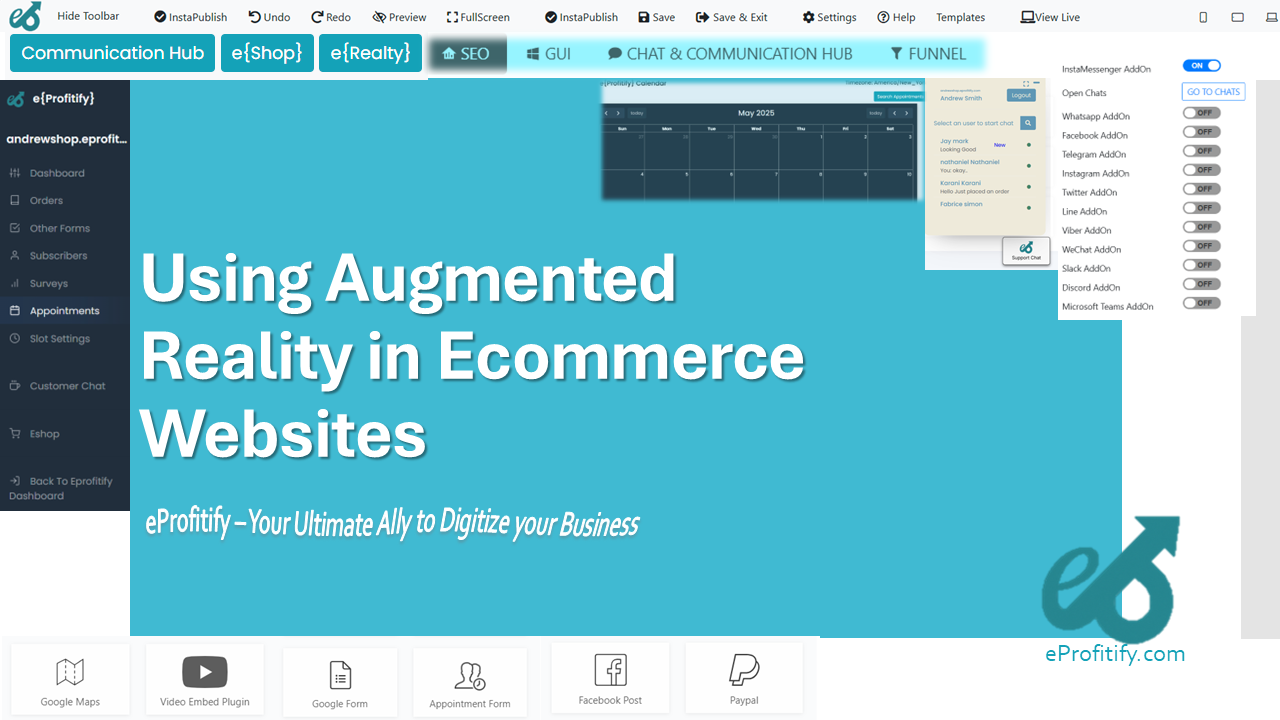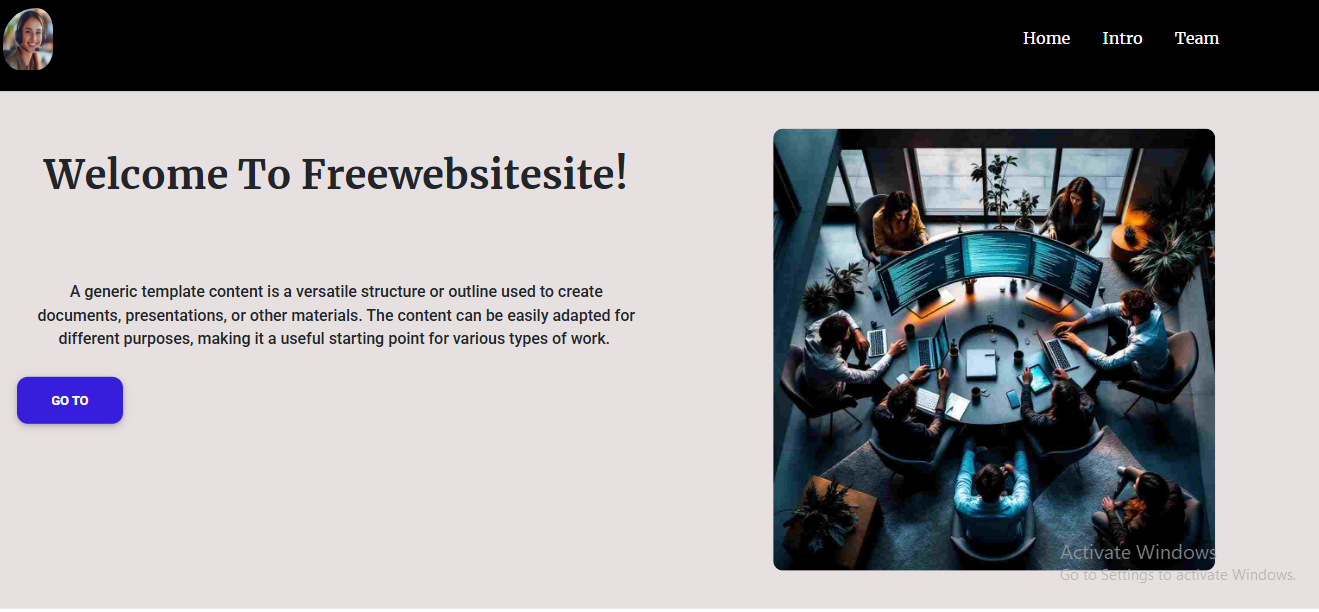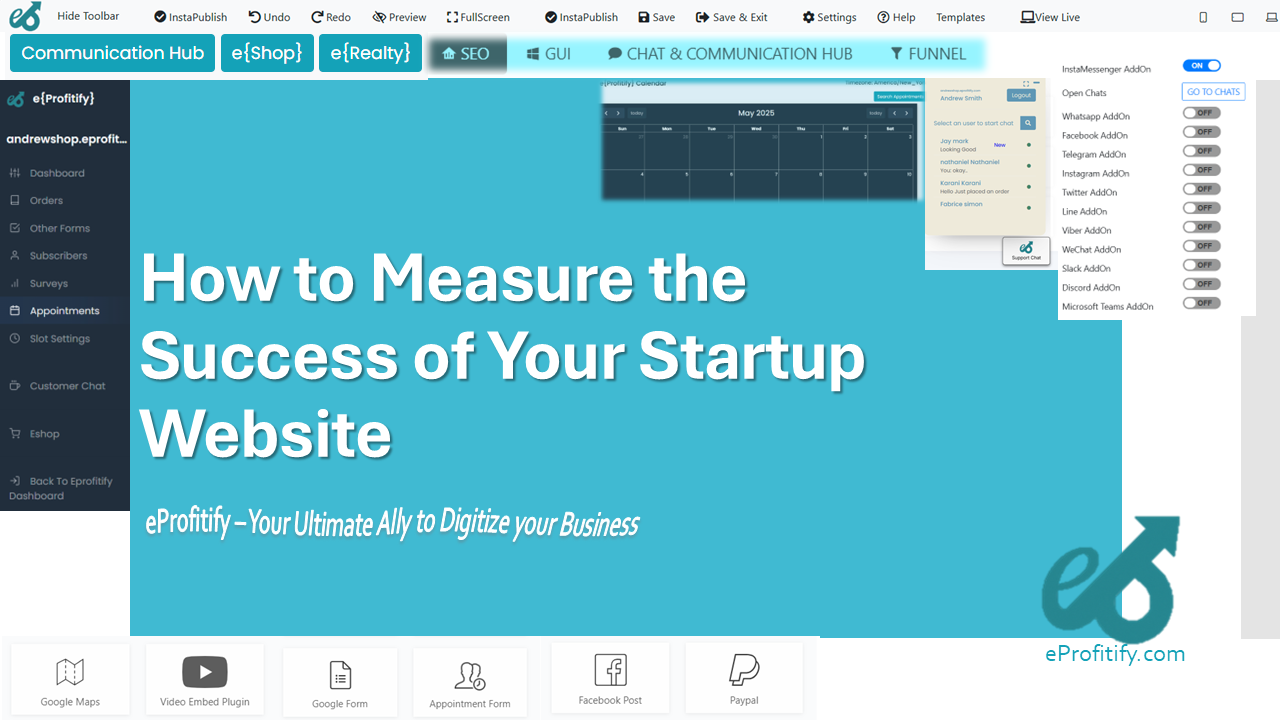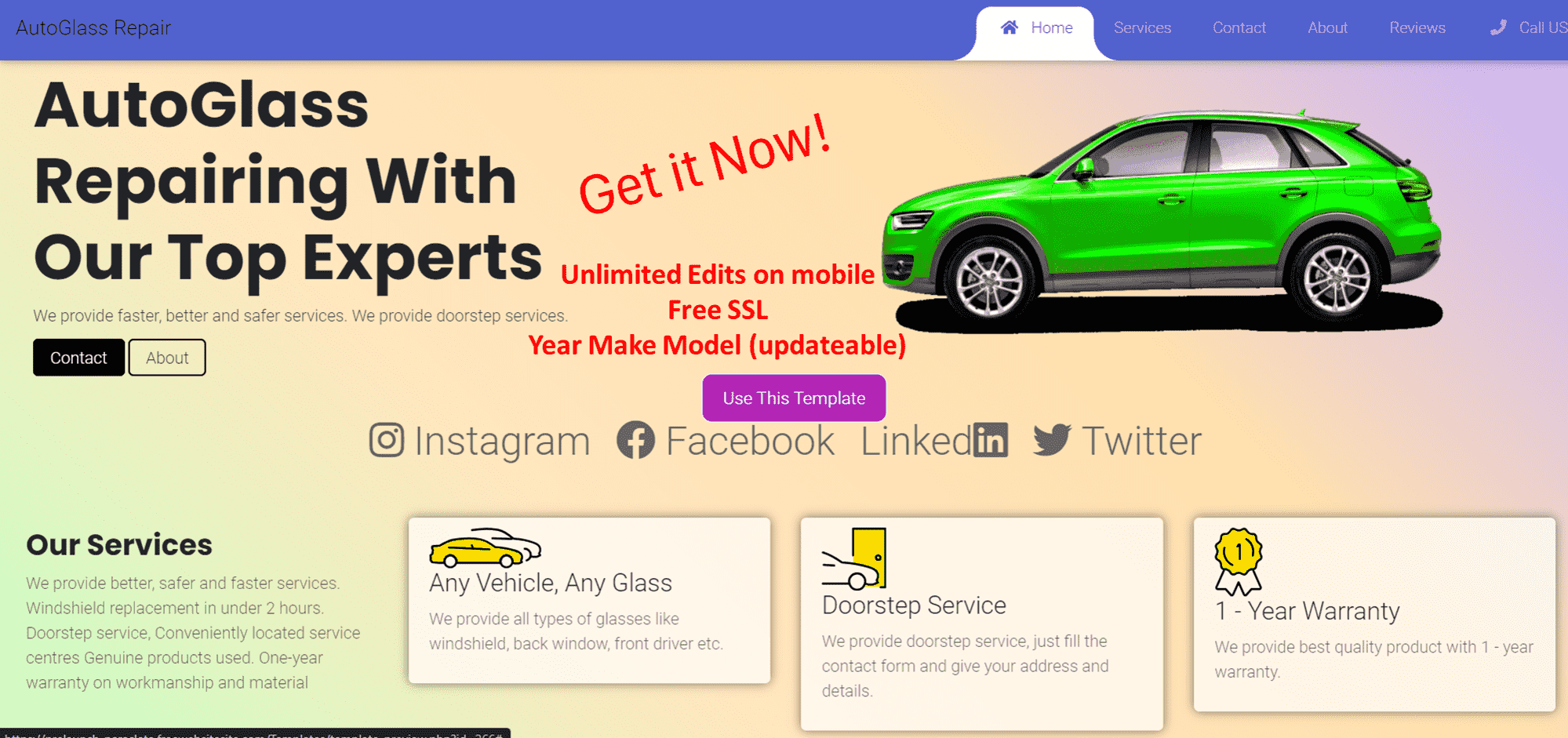Using Augmented Reality in Ecommerce Websites

Leveraging Augmented Reality in Ecommerce: A Game-Changer with Eprofitify
Introduction
The digital commerce landscape is evolving rapidly, and Augmented Reality (AR) has emerged as a transformative tool, redefining how consumers interact with products online. By overlaying digital information onto the physical world, AR bridges the gap between online shopping and in-store experiences. This article explores the pivotal role of AR in ecommerce, backed by compelling statistics, and highlights how platforms like Eprofitify are leading the charge by integrating AR with powerful business tools.
The Rise of AR in Ecommerce
AR technology allows customers to visualize products in their real-world environment using smartphones or AR glasses. From virtual furniture placement to trying on makeup, brands like IKEA, Sephora, and Warby Parker have pioneered AR adoption, witnessing significant boosts in engagement and sales. According to Statista, the global AR market is projected to reach $198 billion by 2025, with retail and ecommerce being key drivers. Another survey by Snap Inc. revealed that 94% of consumers expect to use AR for shopping annually, signaling a paradigm shift in buyer expectations.
Key Benefits of AR in Ecommerce
-
Enhanced Customer Experience
AR eliminates guesswork by enabling interactive product previews. For instance, a shopper can visualize how a couch fits in their living room. This immersive experience drives emotional connections, with 71% of consumers stating they’d shop more frequently if AR was available (Retail Perceptions). -
Reduced Return Rates
Misunderstood product sizing or appearance accounts for 30% of ecommerce returns (Narvar). AR mitigates this by letting users “try before they buy.” A 2023 report by ThreeKit found that brands using AR saw a 35% reduction in returns. -
Increased Conversion Rates
Interactive experiences translate to sales. Shopify merchants using AR reported a 94% higher conversion rate compared to those without AR. Additionally, 61% of consumers prefer retailers offering AR, citing confidence in purchase decisions (Zuora). -
Personalized Shopping Journeys
AR adapts to user behavior, offering tailored recommendations. For example, beauty apps like L’Oréal’s ModiFace suggest shades based on skin tone analysis, enhancing satisfaction.
Challenges in Implementing AR
Despite its benefits, AR adoption faces hurdles:
- Technical Complexity: Developing AR tools requires expertise in 3D modeling and SDKs like ARKit or ARCore.
- Cost: Custom AR solutions can be expensive for SMEs.
- User Adoption: Encouraging customers to use AR features demands intuitive design and education.
How Eprofitify Simplifies AR Integration and Beyond
Eprofitify stands out as a holistic website management platform that seamlessly integrates AR capabilities with essential business tools, empowering retailers to overcome adoption barriers. Here’s how:
1. AR Integration for Immersive Experiences
Eprofitify’s platform supports WebAR technology, enabling users to access AR features directly via browsers—no app downloads required. Merchants can upload 3D product models, allowing customers to visualize items in their space. For example, a furniture seller can showcase sofas in real room settings, reducing returns and boosting buyer confidence.
2. Instant Messaging for Real-Time Support
While interacting with AR, customers may have questions. Eprofitify’s instant messaging tool connects shoppers with support agents instantly, resolving queries during decision-making. This feature is linked to CRM data, ensuring personalized assistance based on browsing history.
3. Appointment Management System
For hybrid retailers (e.g., beauty salons), Eprofitify’s appointment scheduler syncs with AR try-ons. After virtually testing hairstyles, customers can book in-person consultations, streamlining the journey from online exploration to offline purchase.
4. Unified Ecommerce and CRM Tools
Eprofitify’s CRM system tracks AR interactions, such as which products users visualized most. This data informs targeted email campaigns and dynamic pricing strategies. For instance, a user who frequently views an AR-rendered dress might receive a tailored discount, driving conversions.
5. Analytics and Omnichannel Marketing
The platform’s analytics dashboard measures AR engagement metrics (e.g., time spent, click-through rates), helping businesses refine offerings. Integrated marketing tools enable AR campaign promotions across social media, embedding TikTok-like AR filters to attract younger demographics.
Statistics Validating AR’s Impact
- Brands adopting AR report a 40% increase in average order value (Delightree).
- 52% of shoppers rushed to retailers’ sites during the pandemic for AR experiences (Adobe).
- 72% of Gen Z consumers prefer AR-heavy shopping platforms (Oberlo).
The Future of AR with Platforms Like Eprofitify
As 5G and AI advance, AR will become faster and more lifelike. Eprofitify’s commitment to innovation positions it as a leader, offering scalable solutions for SMEs and enterprises alike. Features like AI-driven AR customization (e.g., suggesting matching accessories) will further personalize shopping journeys.
Conclusion
AR is no longer a futuristic concept but a necessity for ecommerce success. By reducing returns, enhancing engagement, and personalizing experiences, it offers a competitive edge. Platforms like Eprofitify amplify these benefits by combining AR with CRM, messaging, and analytics tools, creating a unified ecosystem for modern retailers. As consumer expectations grow, adopting AR through versatile platforms will be pivotal in shaping the future of digital commerce.
Word Count: 997







.png)
